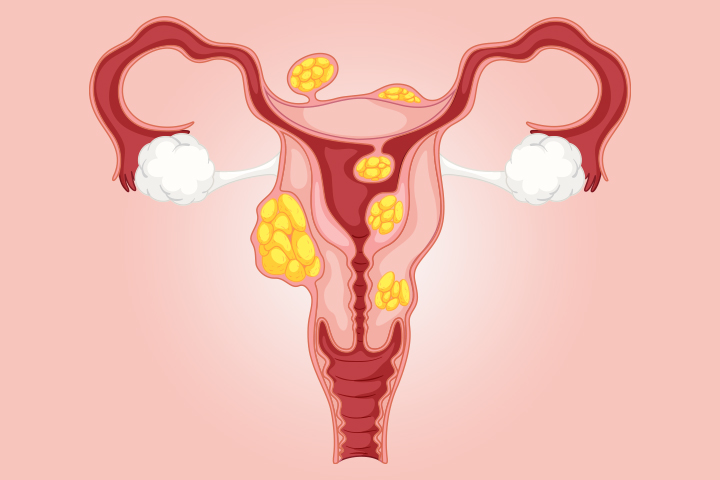Uterine fibroids are noncancerous growths of muscle and fibrous tissue that develop in the wall of the uterus. Though prevalent, affecting up to 70% of women by the age of 50, their impact on fertility varies. While many women with fibroids conceive without difficulty, some may experience challenges.
Uterine fibroids are noncancerous growths of the uterus that often appear during childbearing years. This aren’t associated with an increased risk of uterine cancer and almost never develop into cancer.
Many women have uterine fibroids sometime during their lives. But most women don’t know they have uterine fibroids because they often cause no symptoms. Your doctor may discover fibroids incidentally during a pelvic exam or prenatal ultrasound

Factors Influencing Fertility with Uterine Fibroids:
Location and size:
Fibroids located within the uterine cavity (submucosal) or those large and distorting the uterine shape are more likely to affect fertility.
Fallopian tube blockage:
Large fibroids can press on or block the fallopian tubes, hindering the sperm-egg meeting.
Blood flow disruption:
Fibroids may disrupt blood flow to the endometrium, the uterine lining, impacting embryo development.
Cervical shape changes:
Fibroids can alter the cervix, potentially hindering sperm passage.
Factors Affecting Fertility Beyond Hormones:
Age:
Female fertility naturally declines with age due to a decrease in egg quality and quantity.
Ovulatory Dysfunction:
Irregular or absent ovulation can significantly impact fertility.
Endometriosis:
The presence of endometrial tissue outside the uterus can cause inflammation and hinder implantation.
Blocked Fallopian Tubes:
Blocked tubes prevent eggs from reaching sperm for fertilization.
Male Factor Infertility:
Sperm quality, including count, motility, and morphology, plays a crucial role in conception.
Faculties :
Genetic changes :
Many fibroids contain changes in genes that differ from those in normal uterine muscle cells.
Hormones :
Estrogen and progesterone, two hormones that stimulate development of the uterine lining during each menstrual cycle in preparation for pregnancy, appear to promote the growth of fibroids. Fibroids contain more estrogen and progesterone receptors than normal uterine muscle cells do. Fibroids tend to shrink after menopause due to a decrease in hormone production.
Other growth factors :
Substances that help the body maintain tissues, such as insulin-like growth factor, may affect fibroid growth.
The growth patterns of uterine fibroids vary — they may grow slowly or rapidly, or they may remain the same size. Some fibroids go through growth spurts, and some may shrink on their own. Many fibroids that have been present during pregnancy shrink or disappear after pregnancy, as the uterus goes back to a normal size.
It's important to remember that:
- Not all women with fibroids experience fertility problems.
- Other factors like age, ovulation issues, and blocked fallopian tubes can also contribute to infertility.
- Consulting a reproductive specialist is crucial for diagnosis and personalized treatment plans.
Treatment options for fibroids, depending on severity and fertility goals, may include:
Medication:
To manage symptoms and potentially shrink fibroids.
Myomectomy:
Surgical removal of fibroids while preserving the uterus.
Minimally invasive procedures:
Uterine artery embolization or myolysis for targeted fibroid treatment.
Conclusion
Uterine fibroids can pose challenges for some women trying to conceive. Understanding how fibroid location, size, and other factors influence fertility is crucial. Consulting a healthcare professional for diagnosis and personalized treatment options is vital for managing fibroids and optimizing fertility potential.
